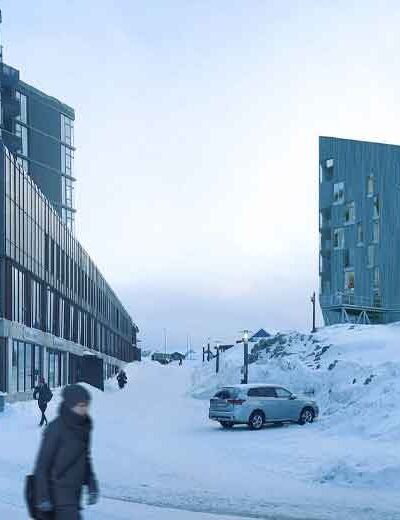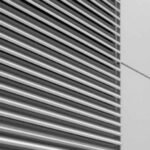Designing a home for a cold climate requires more than just good insulation. It involves a thoughtful approach to architecture that embraces the challenges of snow, ice, and low temperatures. By making smart design choices, you can create a home that is not only warm and safe but also energy-efficient and beautiful. This guide explores essential architectural additions that can transform your cold-weather house into a cozy, resilient sanctuary.
From managing heavy snowfall to maximizing natural light, these features are designed to work with the environment, not against it. We’ll explore practical solutions like heated driveways, strategic window placement, and durable roofing materials that ensure your home remains comfortable and functional all winter long. By integrating these elements, you can build a space that stands up to the harshest weather while providing a welcoming retreat.
Embrace the Warmth of a Heated Driveway
One of the biggest winter hassles is dealing with a snow- and ice-covered driveway. Shoveling can be strenuous, and using chemical de-icers can damage your pavement and harm the environment. A heated driveway system offers a seamless solution, melting snow and ice on contact and keeping your driveway clear and safe throughout the winter.
These systems work by circulating heated water through embedded pipes (hydronic systems) or by using electric heating cables installed beneath the pavement. While the initial installation cost can be significant, the long-term benefits are substantial. You eliminate the need for manual snow removal, reduce the risk of slip-and-fall accidents, and extend the life of your driveway by preventing damage from freeze-thaw cycles and corrosive salts. It’s a modern convenience that adds significant value and safety to any cold-climate home.
Maximize Light with Smart Window Design
In regions with long, dark winters, maximizing natural light is crucial for both well-being and energy efficiency. Strategic window placement and selection can flood your home with sunlight, making spaces feel brighter and warmer.
Passive Solar Design
Passive solar design involves orienting your home and placing large, high-performance windows on the south-facing side. This allows the low-angled winter sun to penetrate deep into your home, providing natural heat and light. In the summer, when the sun is higher, overhangs or awnings can block direct sunlight, preventing overheating.
High-Performance Glazing
Investing in high-quality windows is essential. Look for double or triple-glazed windows with low-emissivity (Low-E) coatings. These advanced coatings reflect heat back into your home during the winter and block it out during the summer, significantly improving your home’s insulation and reducing energy bills. Though they are an upfront investment, energy-efficient windows pay for themselves over time through lower heating and cooling costs.
Choose Durable, Weather-Resistant Materials
The materials you choose for your home’s exterior must be able to withstand the rigors of a cold climate, including heavy snow, ice, and fluctuating temperatures.
Robust Siding and Insulation
Fiber cement and engineered wood siding are excellent choices for cold climates. They are durable, resistant to moisture, and less prone to cracking or warping than traditional wood. Pairing quality siding with a robust insulation system, like continuous exterior insulation, creates a tight thermal envelope. This barrier minimizes heat loss and prevents cold spots, keeping your home consistently comfortable.
A Resilient Roofing System
Your roof is the first line of defense against winter weather. A durable roofing material like metal is ideal for snowy regions because its smooth surface helps shed snow naturally. To manage the snow that does accumulate, consider installing metal roof snow guards. These small but essential devices prevent large sheets of snow and ice from sliding off the roof all at once, which can damage property and endanger people below. They break up the snowpack, allowing it to melt or fall in smaller, manageable amounts, ensuring safety around your home’s perimeter.
Design a Functional and Sheltered Entryway
A well-designed entryway is a practical necessity in a cold climate. It acts as a buffer zone between the harsh outdoors and your warm interior, helping to keep your home clean and comfortable.
An arctic entry, or mudroom, provides a dedicated space to remove wet or muddy boots, coats, and gear before entering the main living area. This space should have durable, water-resistant flooring like tile or vinyl and ample storage for outerwear. Including a bench makes it easier to take off winter footwear. By containing the mess at the entrance, you protect your interior floors and keep your living spaces cleaner and more inviting. A covered porch or entryway can also provide shelter from snow and rain as you enter and exit your home.
Prepare for the Cold
Building a home that thrives in a cold climate is about smart, forward-thinking design. By integrating features like heated driveways, high-performance windows, durable materials, and functional entryways, you can create a space that is prepared for whatever winter brings. These additions enhance comfort, improve safety, and boost energy efficiency, turning your house into a warm and resilient home for years to come.





Leave a Reply